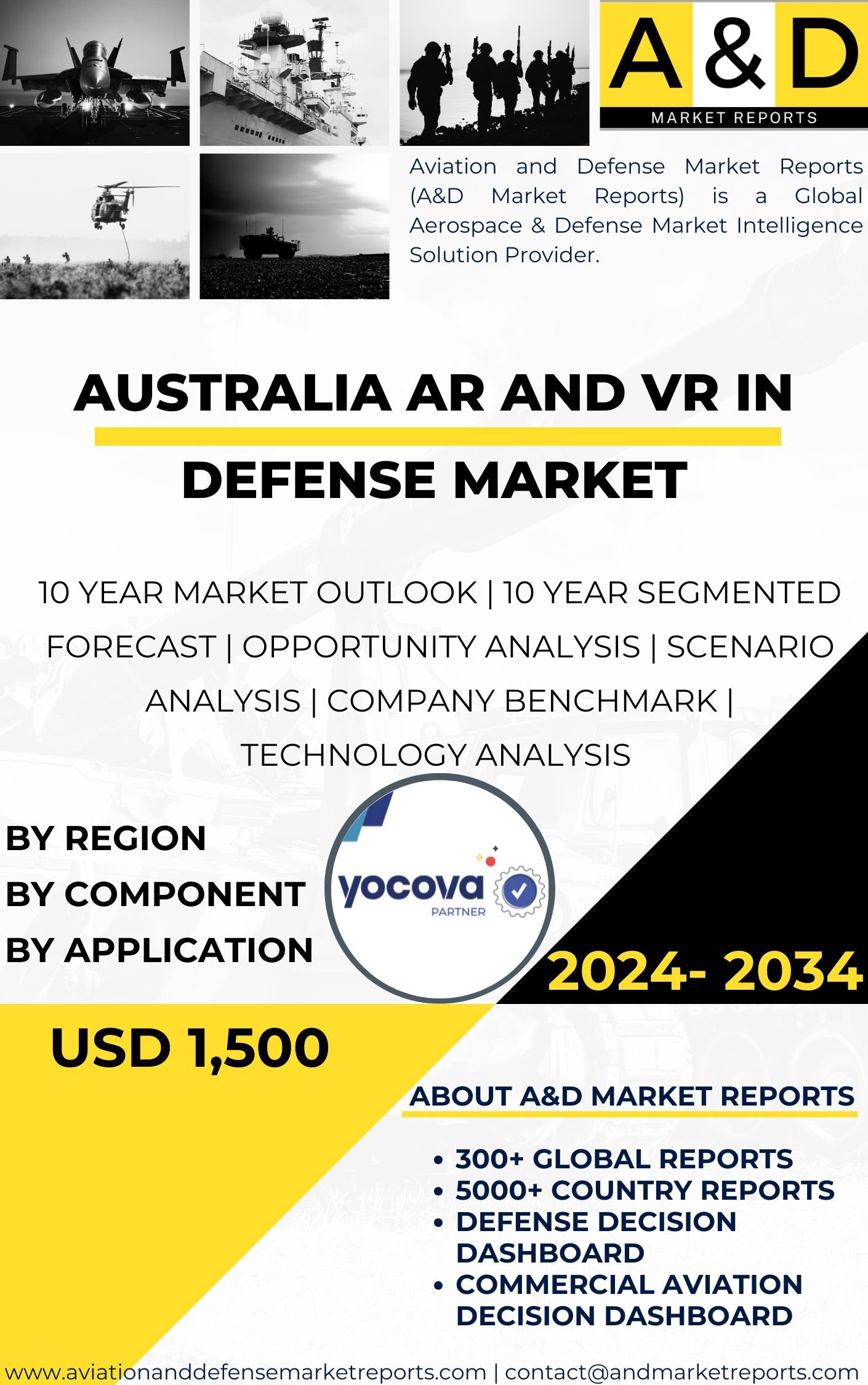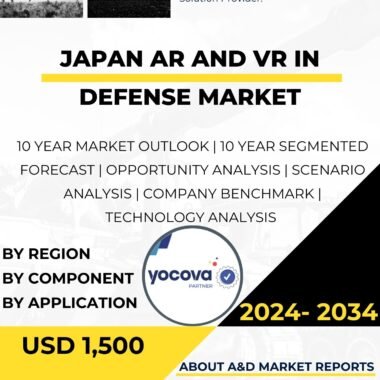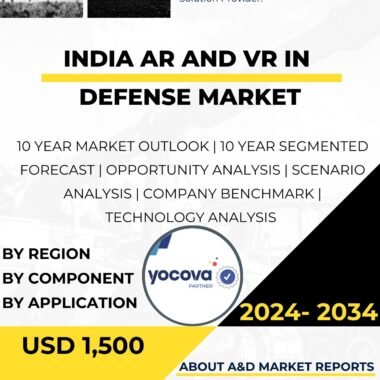Description
Australia AR & VR in Defense Market
The Australia AR & VR in Defense Market is a burgeoning and transformative sector that is revolutionizing the way the Australian Defense Force (ADF) operates and trains its personnel. AR and VR technologies offer immersive and interactive experiences that bridge the gap between the physical and digital worlds, providing a range of applications in defense operations, training, maintenance, and decision-making processes. As a nation committed to maintaining a technologically advanced defense force and contributing to regional security, Australia recognizes the strategic importance of investing in AR and VR technologies to enhance situational awareness, improve training effectiveness, and optimize decision-making capabilities. This article provides a comprehensive analysis of the Australia AR and VR in Defense Market, covering its current state, key drivers, challenges, applications, technological advancements, and growth prospects.
The Australia AR and VR in Defense Market have witnessed remarkable growth and interest due to the country’s commitment to harnessing cutting-edge technologies for defense applications. AR and VR technologies offer the ADF innovative ways to enhance situational awareness, improve training, and streamline various defense processes. Augmented Reality overlays digital information onto the real-world environment, while Virtual Reality immerses users into simulated environments, both empowering defense personnel with valuable insights and realistic training scenarios.
One of the key drivers behind the market’s prominence is the ADF’s focus on enhancing situational awareness and decision-making capabilities. AR technologies enable defense personnel to access critical information in real-time, overlaying digital data onto their field of view. This capability enhances situational awareness, allowing soldiers, pilots, and commanders to access vital data such as maps, threat assessments, and mission-critical information directly in their line of sight.
Moreover, the Australia AR and VR in Defense Market are driven by the country’s commitment to modernizing its defense training programs. VR simulations offer a safe and cost-effective means of training defense personnel in realistic and high-risk scenarios, improving skill development and readiness across various military disciplines.
The market’s growth is also influenced by Australia’s interest in fostering innovation and investing in emerging technologies. Collaborations between the government, defense industries, and research institutions have led to the development of customized AR and VR solutions for the ADF. This strategic approach not only enhances defense capabilities but also promotes the growth of the local defense industry and fosters Australia’s reputation as a technology innovator.
The Australia AR and VR in Defense Market encompass a wide range of applications, each enhancing different aspects of defense operations and training. In training and education, VR simulations offer defense personnel opportunities to engage in realistic and immersive scenarios, including combat simulations, flight training, and medical training. These simulations enable personnel to practice critical skills and decision-making in a controlled and safe environment, ensuring they are well-prepared for real-world challenges.
Additionally, AR technologies are used in maintenance and repair tasks, guiding personnel through complex procedures and providing step-by-step instructions, reducing errors, and improving efficiency. AR overlays digital information onto physical equipment, offering valuable insights during maintenance tasks, troubleshooting, and equipment diagnostics.
Furthermore, AR and VR technologies support mission planning and rehearsal, enabling defense forces to visualize and simulate complex operations in advance. This capability allows for better coordination, risk assessment, and tactical planning, improving the overall success of military missions.
Moreover, AR and VR applications extend to medical training and telemedicine, where VR simulations aid medical professionals in practicing surgical procedures and providing remote medical assistance in challenging environments.
Despite the market’s growth and potential, the Australia AR and VR in Defense Market also face certain challenges. One significant challenge is the need for continuous investment in research and development to harness the full potential of AR and VR technologies for defense applications. As the technology continues to evolve, ongoing innovation and adaptation are crucial to developing customized solutions that meet the specific needs of the ADF.
Moreover, addressing the issue of integrating AR and VR technologies into existing defense systems and processes is vital for maximizing their benefits. Seamless integration requires collaboration among different defense units and stakeholders to ensure the efficient use of AR and VR capabilities across the ADF.
Additionally, ensuring the security and resilience of AR and VR systems is essential in defense operations. As these technologies become increasingly interconnected, robust cybersecurity measures are necessary to protect sensitive data and prevent potential cyber threats.
Looking ahead, the Australia AR and VR in Defense Market are expected to witness continued growth and advancements. As the ADF seeks to enhance situational awareness, optimize training, and improve decision-making processes, the demand for AR and VR technologies will remain strong. Continued investment in research and development, collaboration between the government and industry stakeholders, and a focus on addressing technical challenges will drive advancements in AR and VR applications and solutions.
In conclusion, the Australia AR and VR in Defense Market is a strategically important sector that empowers the ADF with advanced technologies for enhanced situational awareness, training, and decision-making capabilities. AR and VR applications offer realistic simulations, improve training effectiveness, and streamline defense processes, contributing to Australia’s defense modernization and readiness. The market’s growth is driven by Australia’s commitment to innovation, training excellence, and technological advancement within its defense industry. Addressing challenges related to technology development, integration, and cybersecurity will be key to unlocking the full potential of the Australia AR and VR in Defense Market and supporting the country’s defense and security objectives.




